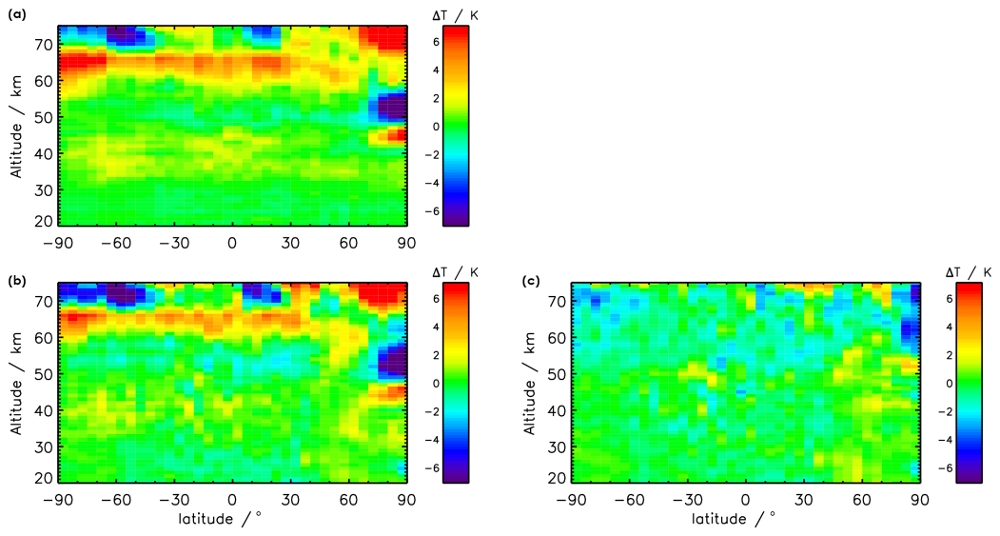V8 MIPAS temperature nominal mode data released

A new data global set of MIPAS temperatures from 2002-2012, based on V8 level-1b data, has recently be released [Kiefer et al., 2021]. Amongst other improvements, a new apriori profile, based on a debiased specified dynamics WACCM run is used above ~45km. Since MIPAS temperature retrievals are performed with a Tikhonov-type regularisation and cannot resolve the shape of the temperature profile above the highest tangent altitude (~70 km for nominal mode), the retrieved profile is forced to take the shape of the a priori, there. A comparison with V5 middle atmosphere temperature retrievals, which use altitude resolved spectral information above 70 km, shows that indeed a considerable improvement has been achieved for this example day (20 February 2009). (a) V8 nominal-mode minus V5 nominal-mode data. (b) V5 middle-atmosphere mode minus V5 nominal-mode data. (c) V5 middle-atmosphere mode minus V8 nominal-mode data. Even below 70 km there is an improvement which can be explained by reduced propagation of errors due to inappropriate a priori from above.
The MIPAS V8 temperature improvements are based partly on changes in level-1b data and partly on changes in the retrieval setup. Major level-1b enhancements include a time-dependent correction for the detector aging and an improved gain calibration assignment. The retrieval setup contains, amongst others, the following improvements: The horizontal variability of temperature is considered by scaling an a priori 3D temperature field in the orbit plane in a way that the horizontal structure is provided by the a priori while the vertical structure comes from the measurements. Additional spectral regions with better sensitivity at higher altitudes are used. Temperature-adjusted climatologies of vibrational populations of CO2 states emitting in the 15 micron region are used in the radiative transfer modelling to account for non-local thermodynamic equilibrium. Systematic and random temperature uncertainties are delivered with the data.
The publication describing the details of the retrieval is https://doi.org/10.5194/amt-14-4111-2021
The temperature data is available from https://www.imk-asf.kit.edu/english/308.php or from https://doi.org/10.5445/IR/1000131913.
